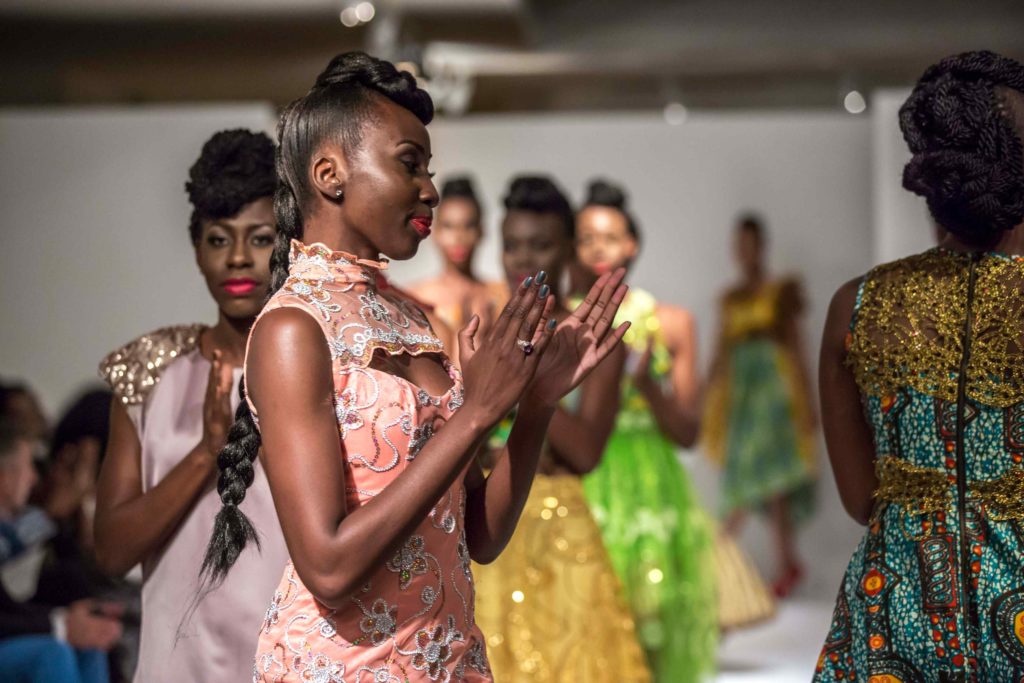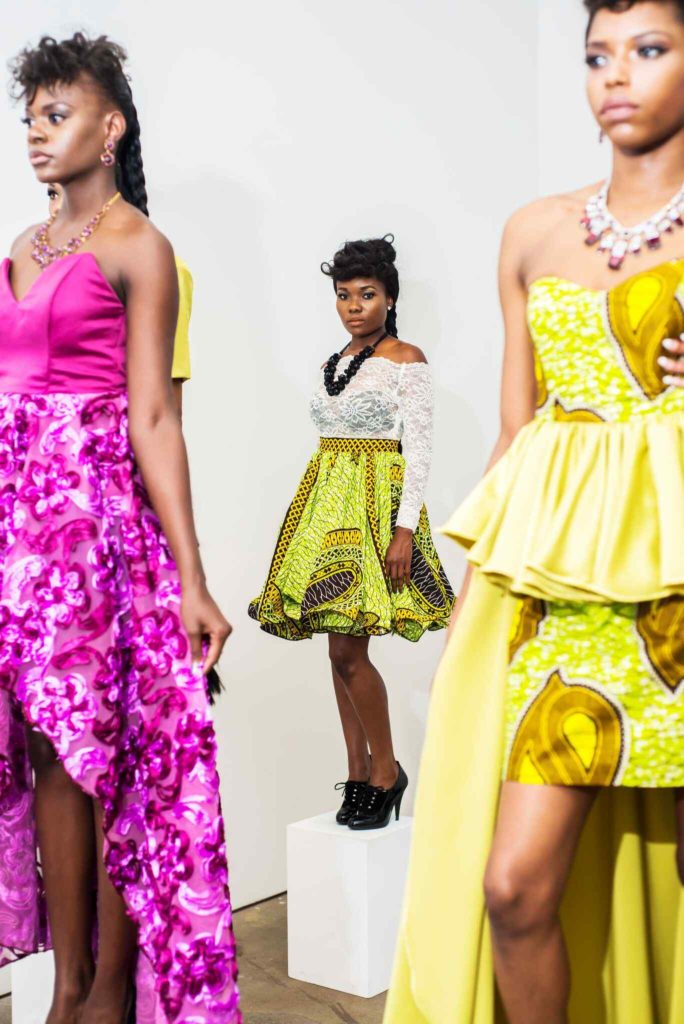
African wax prints are currently undergoing a dramatic rise. Anthropologie, for example, used them to cover ottomans and upholster chairs. Marni used these vivid prints in bold colors in a collaboration with H&M. Burberry Prorsum designed prom dresses and separates with the prints, while Zara has used them as style inspiration in their Spring 2014 collection. These prints, however, which are quintessentially part of African fashion or the fabric of choice for most African fashion designers has yet to disrupt the global fashion industry in the same way that non-African fashion designers have become acclaimed. So why isn’t the fashion industry on the continent trending in the same way that New York or Paris is? The issue is as complex as the patterns of African prints.
For starters, the global fashion industry seems fascinated with collections rooted in these African wax prints. Many are praised for the references to make the desirable fabrics more accessible, although they are They seem to enjoy those who make references to the need to make them more accessible although they are readily available to those that want them. Many even identify African fashion with African wax prints, particularly the use of the Ankara wax print. However, these African wax prints like French silk or the classic Chanel Tweed are just fabrics too.
The most highly prized African wax prints are made by a company called Vilsco. So popular in Africa, Vilsco has grown into a successful global brand with a turnover of about $414 million in 2013 according to The Business of Fashion. Its customers, African women, and their enormous buying potential is something Vilsco has managed to capitalize on. But to the global fashion industry, the beauty or even the sentimental value of African wax prints are never promoted in the same way that Chanel’s Tweed is pushed. Instead, it’s often their bright palettes that are discussed with some suggesting that “they threaten to sear the eye because the color and the patterns are so loud.” Nonetheless, rather than dissect yet another western label that finds it cool to apply them to their collection without understanding their essence, we choose to explore the essence of these prints and how they matter for Africa’s fashion. Here are four things to know about African prints.

On its authenticity
For those who do not know, generally what we think of as an African wax print, isn’t really so African after all. According to Slate Magazine, “the patterns found are Dutch wax prints. Dutch wax is a kind of resin-printed fabric that has long been manufactured in the Netherlands for a West African market. But to call these fabrics either Dutch or West African is to ignore a far more complicated set of origins.” Yinka Shonibare, the well-known Nigerian artist whose work often features these prints, has made a career out of exploring the history of the designs. “The fabrics are not really authentically African the way people think,” Shonibare has said. “They prove to have a crossbred cultural background quite of their own.”
On its origin
The story starts in Indonesia. Batik wax-resist textiles were first imported from Indonesia in the 19th century. The African relish of colorful fabrics made them an instant success. The method of fabrication was soon customized and designs adapted to reflect local traditional culture. The customization that produces the cloth beloved in the continent began by accident. Dutch textile manufacturers, in adapting the Indonesian wax-resist method to a dual-roller system, experienced a few technical problems: their method could not remove all the wax from the textiles, which left spots that resisted color and to make matters worse when a new color was added it would bleed onto the adjacent color. The dual-roller fabric was intended for the Indonesian market, but the Indonesians viewed the fabric with its spots and bleeding colors as spoiled and had no use for it. But, somehow, the “spoiled” fabric made its way to the African marketplace – and clients fell in love with it.

On the story behind each print
To the knowing eye, African print reveals a story, often meaningful to the wearer. The colors may also provide information about the wearer’s ethnic origin, social standing, age and marital status. Dress plays an important role in African society and has even been used as a form of protest. The way that designs were worn and often made were quite effective commentaries during the colonial establishment. Today, motifs in traditional African print designs continue to convey a metaphor and the design spins a tale. For example, the Nigerian Aso Ebi dress tradition encourages members of a particular social group or those attending a wedding, naming ceremony, or burial to adhere to a design or color code. Variety is also the hallmark of African print designs with an eclectic mix of old classics motifs and more contemporary designs with abstract motifs gracing today’s African print market.
On its future
As highlighted earlier, African wax print is undergoing a major transformation within the global fashion industry using them as part of their collection. Everyone from Vilsco and even the Chinese are focused on creating wax prints they believe will inspire the African consumer. Needless to say, the continuing social significance of these prints will remain. They are also bound to continue to influence the foremost fashion designers and emerging ones alike. Whether these prints are used as clothing or as embellishments on handbags, jewelry or even shoes, it is essential to establish the value they bring to the fashion known as African. So while we believe that future looks bright, the ability to translate what Vilsco has managed to do into our hopes and dreams for African fashion will ultimately depend on us as Africans.
If we want to see improvements in the African fashion industry, then we have to create opportunities that ensure that our designers thrive so that they create clothes we love as much as we love the prints themselves.
